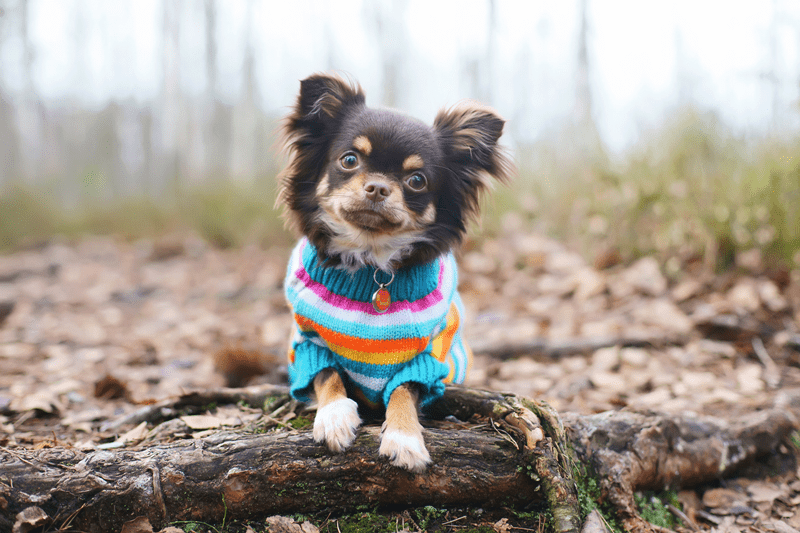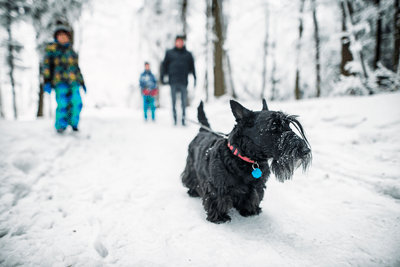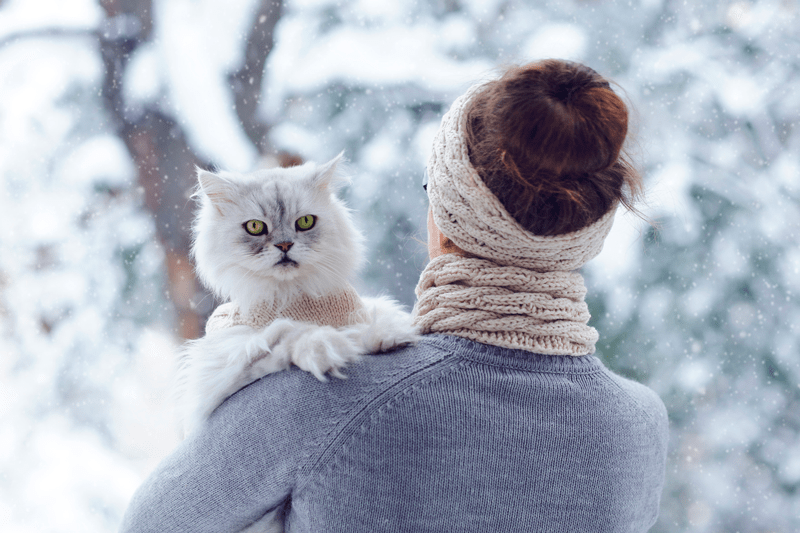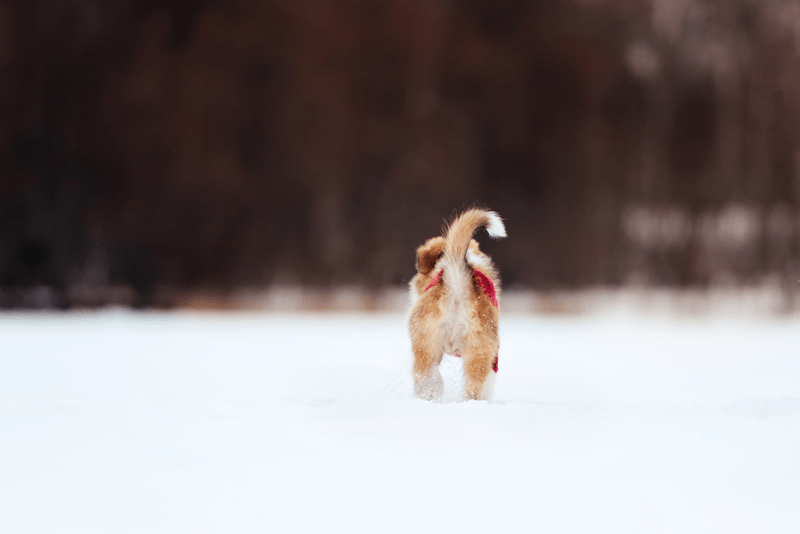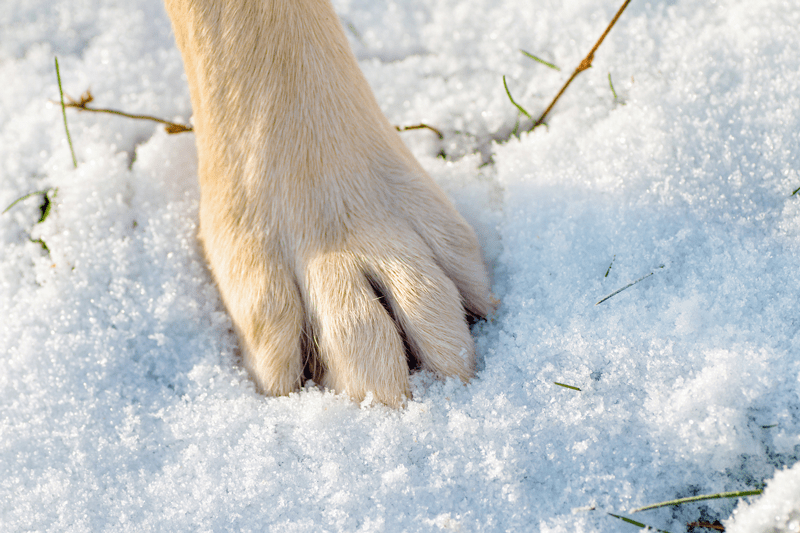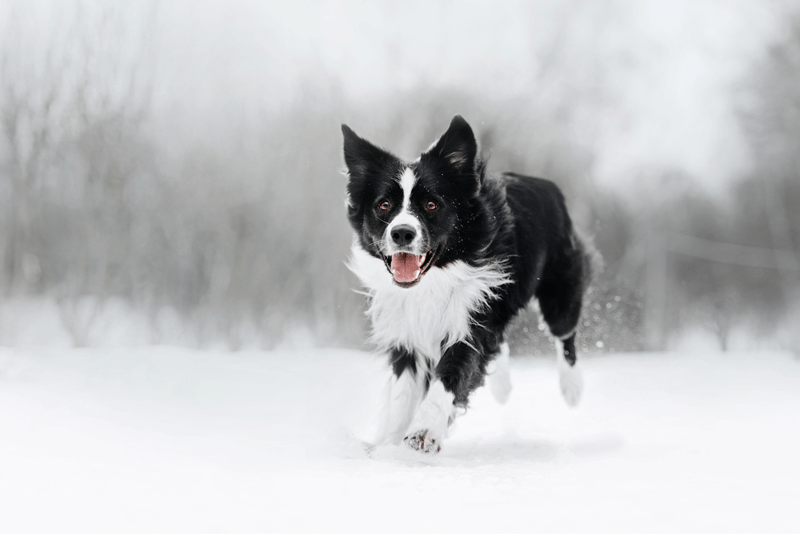Southern states aren’t known for their cold weather, snow, and ice, but recent years have shown us that we’re not immune to Old Man Winter’s wrath. Unfortunately, this means we—and our pets—are not fully prepared for chilly temperatures and the safety hazards they present.
Here are our top cold weather safety tips for pets.
Visit the veterinarian
Like people, cold temperatures affect some pets more than others. And, while some causes are more obvious—such as a lean body condition, short hair coat, or advanced age—pets with certain medical issues can also find coping with cold weather more difficult.
If your pet seems cold sensitive, schedule an appointment with your regular veterinarian and avoid outdoor activities. Cold air can stiffen joints and affect your pet’s ability to regulate their body temperature and affect health conditions, including:
- Arthritis
- Diabetes
- Endocrine (i.e., hormone) disorders
- Cardiovascular problems
- Kidney disease
- Insufficient body fat or muscle atrophy (e.g., senior pets, puppies, and pets with chronic disease, such as cancer)
- Dry skin
Monitor your pet for cold weather stress
Hypothermia occurs when a pet’s body temperature is too low, which can result after prolonged exposure to cold weather. The amount of exposure time is individual to each pet, but Southern pets, who are less adapted to winter weather, are likely more susceptible.
Pets should never be left outside unattended during cold weather and need continuous monitoring for cold-related discomfort. Take your pet indoors if you notice hypothermia signs, which include:
- Shivering or shaking
- Limping
- Stiffness
- Refusing to move or continue on a walk
- Skin or paw redness
- Pale gums
- Palpably cold legs, feet, ears, or abdomen
- Fatigue or sluggishness
Mild hypothermia can be managed by taking the pet indoors and wrapping them in warm blankets and towels. Because hypothermia can be fatal, severely affected pets (e.g., those who are unresponsive, breathing slowly, and have stopped shivering) require emergency veterinary care.
Help your pet stay warm with a jacket or coat
If you reach for a jacket or dress in layers before going outside, you should provide your pet with the same comfort. Many dogs and cats will appreciate the warmth of a coat, jacket, or sweater. Look for a design that covers their chest, back, and hips, is the proper fit, and does not include any ties, belts, or accessories that could make your pet trip or fall. If your pet isn’t used to wearing clothes, introduce items positively with treats and praise, and observe them for stress signs (e.g., panting, pacing, biting, scratching, or attempting to remove the coat).
Any item your pet will be wearing indoors should be removed for several hours every day and their skin and hair coat checked for irritation or matting.
Protect their paws from salt and ice melt
When the icy pellets ping and snowflakes fly, chemical treatments such as salt brine, rock salt, and ice melt are used to thaw streets and sidewalks. Unfortunately, these products—along with rough ice, cold temperatures, and dry air—can irritate your pet’s paws.
If you must exercise your pet outdoors during winter weather, regularly check their paw pads for irritation, cracks, bleeding, or accumulated snow and ice. Thoroughly wash and dry their paws after exposure to ice melt and then moisturize and protect their pads with petroleum jelly or paw balm. Boots can help pets who spend long periods in winter weather or have sensitive skin.
Don’t over-groom your pet
Frequent bathing can remove the skin’s natural oils, resulting in dryness, irritation, and a brittle coat. If your pet gets dirty during a cold snap, use a waterless pet shampoo to spot-treat soiled areas, and avoid soaking your pet. If they need a traditional bath, use a moisturizing shampoo and dry them thoroughly.
Unless your pet’s coat is severely matted, avoid drastic grooming styles (e.g., shave downs, close clipping), which remove the pet’s natural insulation against the cold and leave them more susceptible to cold-related injury and discomfort.
Change up your pet’s exercise routine
Cold weather, snow, and ice can put a chill on your pet’s normal exercise routine. But, if you’re determined to keep your schedule—or your New Year’s resolutions—you can still exercise your pet outdoors if you take these precautions:
- Pick the warmest time — Check the forecast and exercise during the warmest hours.
- Warm up thoroughly — Start every session with a slow walk to ensure your pet’s muscles are warmed and ready to perform.
If you and your pet would rather stay inside, these indoor games can provide a physical and mental workout:
- Pet puzzles — Puzzles encourage your pet to use their nose, paws, and critical thinking skills to access hidden treats.
- Hide and seek recalls — Ask your pet to sit and stay—or have a family member restrain them—and then hide in the house. Call your pet’s name and reward them with treats or a toy when they find you.
- Food-stuffed hollow toys — Fill a Kong, WestPaw Toppl, or Licki Mat with your pet’s meal, or soak dry food in low sodium broth or mix with plain yogurt.
Cold weather can be as unpleasant for pets as for pet owners. Protect your furry friend during every season by paying close attention to their comfort and safety.
And, speaking of meteorology, if your pet is feeling under the weather, UrgentVet can provide convenient care for non-life threatening emergencies. Visit our website to find a location near you, view current wait times, and save your spot online—because your pet can’t wait to feel better.

